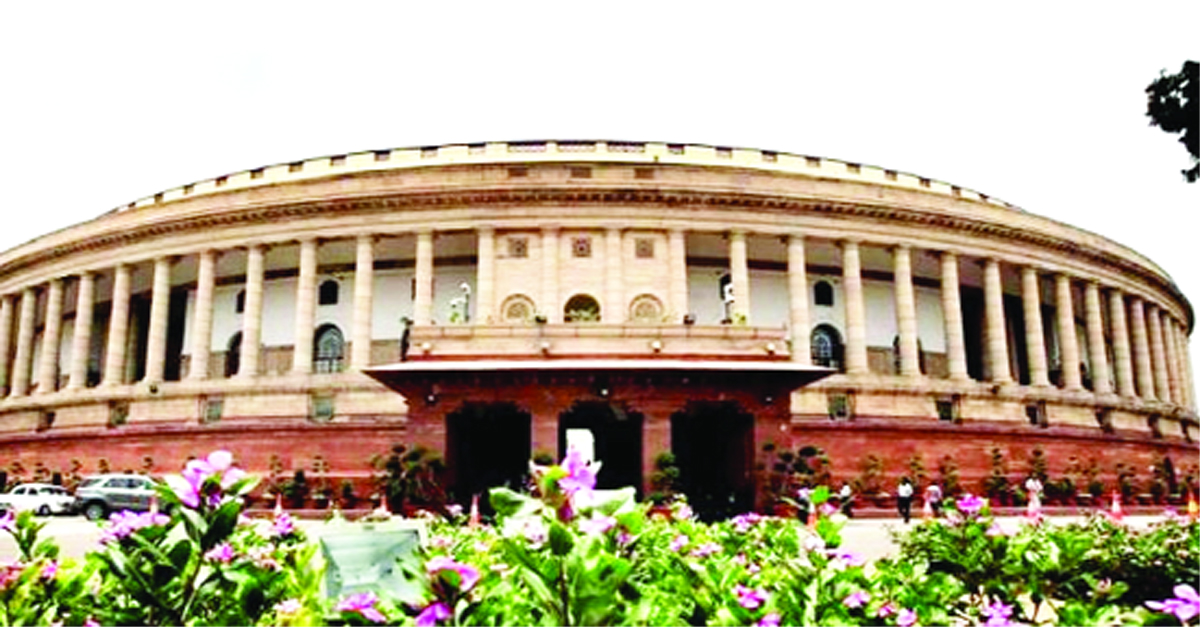Harihar Swarup
Every nation has a message to deliver, a mission to fulfil, a destiny to reach. The mission of India has been to “guide humanity”, Shri Swami Vivekananda rightly said. India is striving hard to achieve the objective of social welfare through its parliamentary democracy.
It was historic day when the Prime Minister Narendra Modi laid the foundation stone of the ultra-modern triangular Parliament building having seating capacity of 1,224 MPs sitting together, a symbol of “Aatmanirbhar Bharat” and “temple of democracy” for supplementing the infrastructure of the existing iconic circular Parliament House designed by architects Edwin Lutyens and Herbert Baker in 1912-13, based on the Chausath Yogini temple, Morena, Madhya Pradesh, one of the oldest heritage sites in India, inaugurated in the year 1927. It is expected that this new building will be completed before Winter Session 2022, with its full grandeur as “har Bhartiya ka swabhiman” epitomising “Ek bharat shreshtha Bharat”.
Since long, there has been a need for addressing severe structural constraints of the existing Parliament House building, more vividly realised during the last Monsoon Session of Parliament held in the shadow of Covid-19 pandemic. Lok Sabha, Rajya Sabha and Central Hall have seating capacities of 552, 245 and 436 respectively, with no facility of desk space before most of the seats.
The proposed new Parliament building is being designed to cater to the present as well as future needs of digitisation, providing for adequate seating space in both Houses, and for joint sittings. Further, for meeting the future demand of possible expansion of strengths of the Houses of Parliament with delimitation in 2026, the new building would provide seating capacities of 888 and 384 members for Lok Sabha and Rajya Sabha respectively, befitting the largest democracy of the world of 1.3 billion people.
We all know that the Constitution is a living and dynamic organism which is supreme. The Constitution is what it is, and not what the Supreme Court says or Parliament wishes it to be. The judiciary, executive and legislature are all creatures of the Constitution; their powers and functions are defined and delimited by the Constitution.
At this historic occasion, I would like to remind all legislators and the public at large through them about certain ideas recently floated by the Prime Minister on November 26 before the 80th Conference of Presiding Officers of all Legislatures in India to have serious thought and action thereon in public interest.
We all know that the language of our laws, rules and regulations is quite difficult to be understood by people of common prudence. Complaints about complexity are as old as the law itself, and technical language is often blamed for baffling and excluding the lay person. In many parts of the world, plain English movement is catching up. In Britain, Australia, Canada, New Zealand, United States – and many other countries – the language of the law is being simplified. In India we are yet to begin. In public interest, there is the need for taking concerted steps for introducing drafting of laws/rules regulations, etc in a simple and lucid language which can be easily understood.
The Central Government is moving to repeal archaic laws that bloat up statute books, occasionally conflict with other laws, and may hinder governance and growth. Lawmaking is the routine business of legislatures, and review for possible repeal should also happen routinely. If a review system were in place, our statute books would be slimmer. To achieve this objective, more than 1,486 Acts/statutes at the Union level have so far been repealed by Parliament so as to make statute book slim. These steps are required to be taken in all states so that numbers of laws on the statue book are brought to the bare minimum.
Recently, at the central level, sunset clause has been introduced in amending laws [The Mineral Laws (Amendment) Act, 2020] and it is also being considered for inclusion in Appropriation Acts and other laws in appropriate manner. Sunset clauses should invariably be incorporated in all amending laws because as per section 6A of the General Clauses Act,1897, the amending law merges with the parent law on enactment and repeal of such amending law does not affect continuance of its provisions. I would also like to suggest the incorporation of sunset clause in amending laws, expiring laws and Appropriation Acts in all states so that no procedural requirement of their formal repealing from statute book is required.
The PM also put emphasis on digitisation of all legislatures in India including two Houses of Parliament by adopting a single platform with central and individual dashboards: National e-Vidhan Application under the Digital India Programme. It is a great opportunity for Parliament to fully switch to the digital platform before Winter Session 2022 when their new chambers would be ready for use. The Government has already dedicated two mission mode projects in the name of “e-Vidhan” for state legislatures and “e-Sansad” for two Houses of Parliament under the Digital India Programme.
There is also a need for a considered debate on the idea of having provisions for a constructive no-confidence motion so as to avoid superfluously moving of no-confidence motions in Indian legislatures.
An appropriate provision in the Constitution and Rules of Procedure of legislatures may be incorporated so as to ensure stability and good governance by providing for constructive confidence/no-confidence motions like that of Germany.
In Germany, as per Article 67 of the Constitution under constructive no-confidence, alternative arrangement is required to be suggested. Under this mechanism if majority of a Government comes under a test, besides no confidence in the existing Government, confidence in the alternative government is sought in the elected House.
Let us again commit ourselves to the service of the last man in the row through our cherished democratic values. (IPA)
Trending Now
E-Paper


